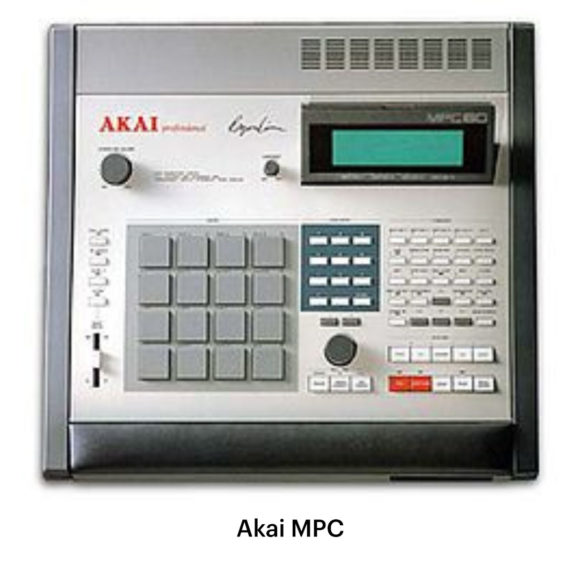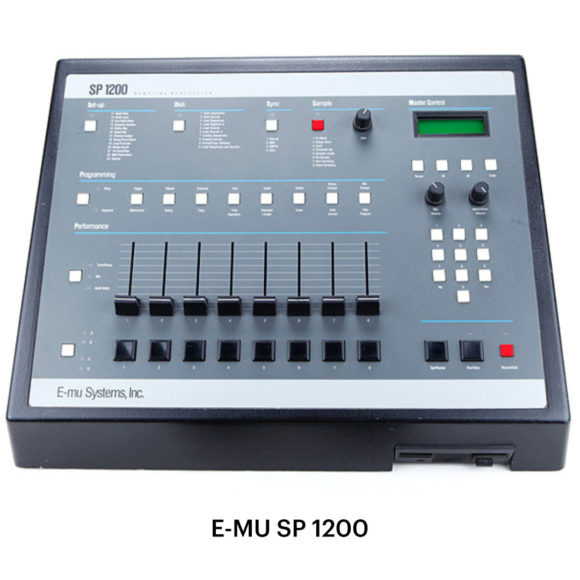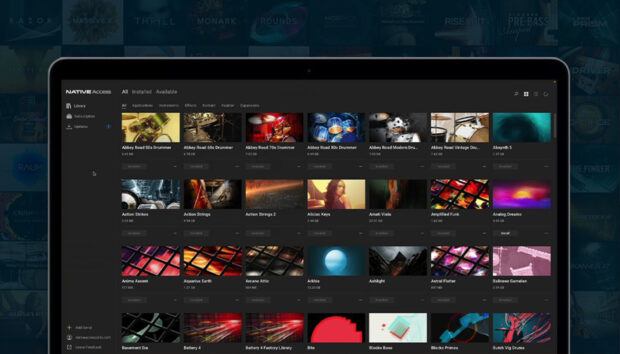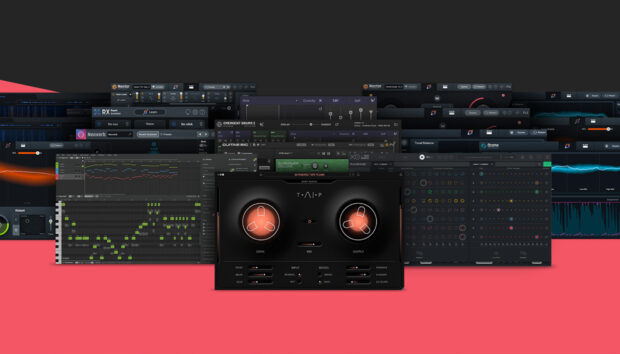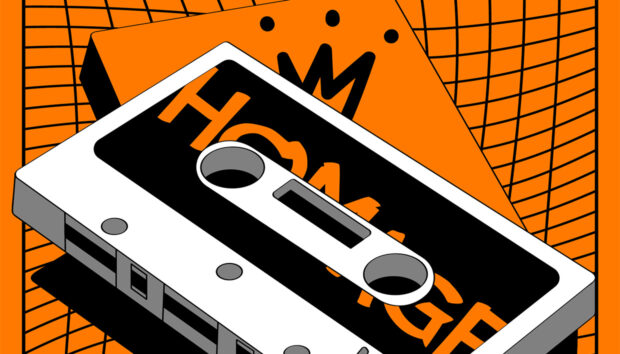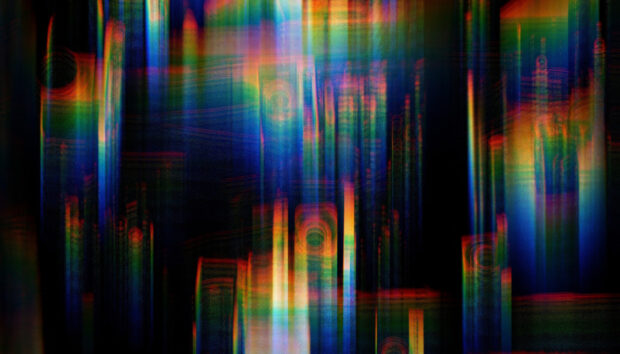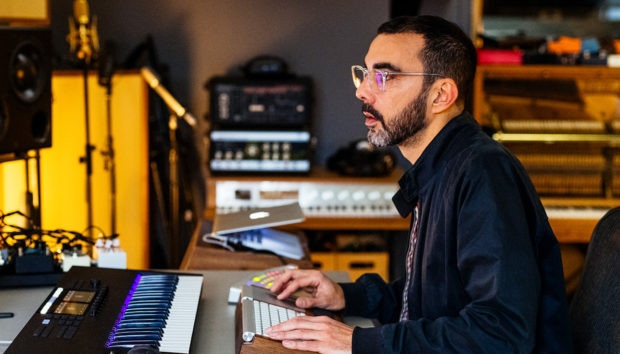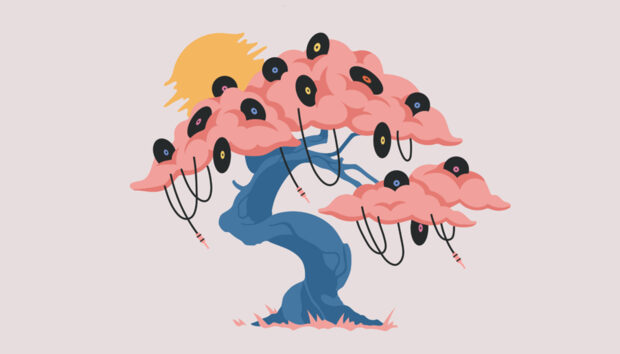
Sampling is absolutely central to modern music-making. Producers regularly use sample packs and sampled instruments, and samplers are at the core of most production workflows. Sampling is so widespread that we don’t often examine it closely. So what is sampling in music, exactly?
In this article, we’ll look at what sampling means in music, from fundamental ideas to sampling techniques. We’ll explore the history of sampling and break down modern sampling approaches. Then we’ll show you how to use sampling in your own music to create a convincing composition from just a few found sounds.
Jump to these sections:
- What is sampling in music?
- The history of sampling
- Different sampling approaches
- How to use sampling in your music
Follow along with this tutorial using MASCHINE+.
What is sampling in music?
Sampling is the use of a piece of recorded audio in a new audio recording. This piece of audio could be anything from a tiny snippet of sound to an extended passage of music. In the process of sampling, it can be manipulated in all kinds of ways: it might be sped up or slowed down, shortened, or processed using effects. It might be looped repeatedly in the new piece of music, programmed into recurring patterns, or used only once.
When we think of sampling, we tend to think of classic examples, such as hip-hop’s use of breakbeats from soul and funk records. But these days, sampling is all around us. When we use a snare sound from a sample pack, process a recording we captured on our phone, or get a realistic piano sound using a KONTAKT instrument, we’re relying on sampling. Sampling is a fundamental building block of modern music-making.
The history of sampling
Sampling has been around since at least the 1940s, when French composer Pierre Schaeffer recorded real-world sounds to tape and edited them together to make “musique concrète.” The technique found its way into popular music in the 1960s via instruments like the Mellotron, which allowed tape loops to be triggered at different pitches using a keyboard, and was used by the Beatles and many others.
Nobody actually used the word “sampling” to describe this technique until the late ‘70s. The creators of the Fairlight CMI coined the term to describe their groundbreaking digital synthesizer, which could play back a few seconds of recorded audio at different pitches. Though expensive and difficult to use, the CMI was embraced by ‘80s pop innovators such as Trevor Horn and Kate Bush, and its lo-fi sound became a hallmark of the era.
The 80s also gave rise to the musical genre most associated with sampling: hip-hop. Early hip-hop DJs like Kool Herc would perform a kind of live sampling, cutting between the breakbeats in soul and funk records. As sampling technology became slicker and more affordable, hip-hop producers made it their own. Many iconic samplers appeared during this period, such as the Akai MPC (first released in 1988), with its touch-sensitive pads, and the E-MU SP 1200 (in 1987), whose unmistakable gritty sound defined much of classic hip-hop.
In the early ‘90s, a series of US Supreme Court rulings on copyright infringement made sampling a lot more risky (and potentially expensive). The golden era of sampling was over, but musicians didn’t stop sampling. Many got creative, working around the law by sampling their own sounds rather than existing recordings. And advances in technology – including the rise of computer production – widened the scope of sampling. Innovators like Matmos and Matthew Herbert, for example, used unusual sound sources and advanced processing to put an original twist on sampling.
Different sampling approaches
In the age of computer production, sampling is all around us. We build tracks out of sample packs and sample instruments, and use sophisticated modern-day samplers like Native Instruments’ MASCHINE. We can break down these various sampling practices into a few distinct approaches. Let’s take a look at them.
Sampling an existing recording
This is the classic sampling music approach associated with hip-hop. It involves taking a sound that has already been recorded – typically by somebody else – and incorporating it into your own production. This might mean looping a breakbeat from an old soul record to create a groove in your track, or building a hook out of a pop acapella you found online.
Without the permission of the rights holder, this kind of sampling is illegal. Fortunately, it’s easier than ever to find royalty-free samples: that is, sounds made specifically for others to legally sample in their productions. Samplers such as Native Instruments’ MASCHINE and BATTERY 4 come with a treasure trove of ready-to-use samples. In the modern age, this method of sampling hasn’t died out – it’s just changed form.
Creating your own samples
Perhaps you’re looking for a specific sound that you can’t find in existing sample libraries. Or maybe you want to give your music a unique edge. Why not try creating your own samples?
To do this you’ll need some recording tools: a microphone and audio interface for capturing hi-fidelity sounds at home, or a portable recorder for making field recordings. For that lo-fi edge, you could try simply using your phone or laptop mic. Once you’ve gathered some promising sounds, you can edit them down to the best bits and start building your own personal sample library, ready for use whenever inspiration strikes.
This approach is more laborious than using pre-existing samples, but it can lend your music a unique flavor. Some of the greats of sample culture work this way. As multi-platinum producer DJ Khalil told us, this method was key to creating his Artist Expansion pack. “Most of my time [working on the sample pack] was dedicated to doing jam sessions,” he said. “I had my whole keyboard set-up and we would jam for hours and then I would literally go through everything, arrange it, EQ it, tweak it.”
Using sampled instruments
Part of sampling’s power is its ability to place real-world sounds at your fingertips. One of the key early uses of sampling was to provide convincing imitations of acoustic instruments. It turned out that sampling a single piano note and then playing it at different pitches sounded much more convincing than a synthesizer’s imitation of a piano. Still, it didn’t sound that convincing.
Over the decades, engineers have developed more sophisticated ways of imitating real-world sounds through sampling. These days, sampled instruments—that is, playable collections of samples, usually designed to imitate acoustic instruments—are a booming industry. Using modern-day samplers such as KONTAKT 7, these instruments are the bedrock of film and TV scoring, where they offer composers an orchestra in a box—for a fraction of the price of the real thing.
From orchestral instruments to folkloric percussion, pristine choirs to esoteric oddities, the world of sampled instruments is vast. With some patience and care you can even build your own sampled instruments. Watch how Nils Frahm captured his concert grand piano in NOIRE, a sampled instrument with a distinctive twist.
How to use sampling in your music
Now that you understand the basics of sampling, let’s look at how to use the technique in your own music. In a video for Native Instruments, top flight producer Khrysis demonstrated how he builds beats out of samples using Native Instruments’ MASCHINE+. Drawing on sample packs and crackly vinyl, the video shows the basic process of turning a few found sounds into a compelling piece of music. Let’s go through the steps.
1. Get a sampler
Before you can start sampling, you need some kind of sampler. There are numerous software and hardware samplers available, and most DAWs come with a built-in sampler. Khrysis is a longtime user of MASCHINE: a software-hardware hybrid that offers a touch-responsive pad design reminiscent of the classic Akai MPC. But a software sampler, such as the percussion-focussed BATTERY 4, will work just as well.
2. Find your sound source
You could source samples from existing recordings, royalty-free sample packs or libraries, or by recording them yourself. The sample source you choose will shape the kinds of sounds you can get. But there’s no right or wrong sample source—what matters is how creatively you use it.
In his demonstration, Khrysis uses sounds from a sample pack, and records a breakbeat from a crackly old vinyl record for an authentic boom-bap sound.
3. Sculpt your sample
Once you’ve captured some audio from your sample source, you can load it into your sampler and start sculpting your sample. There are numerous techniques that can get you from raw audio to an effective sample.
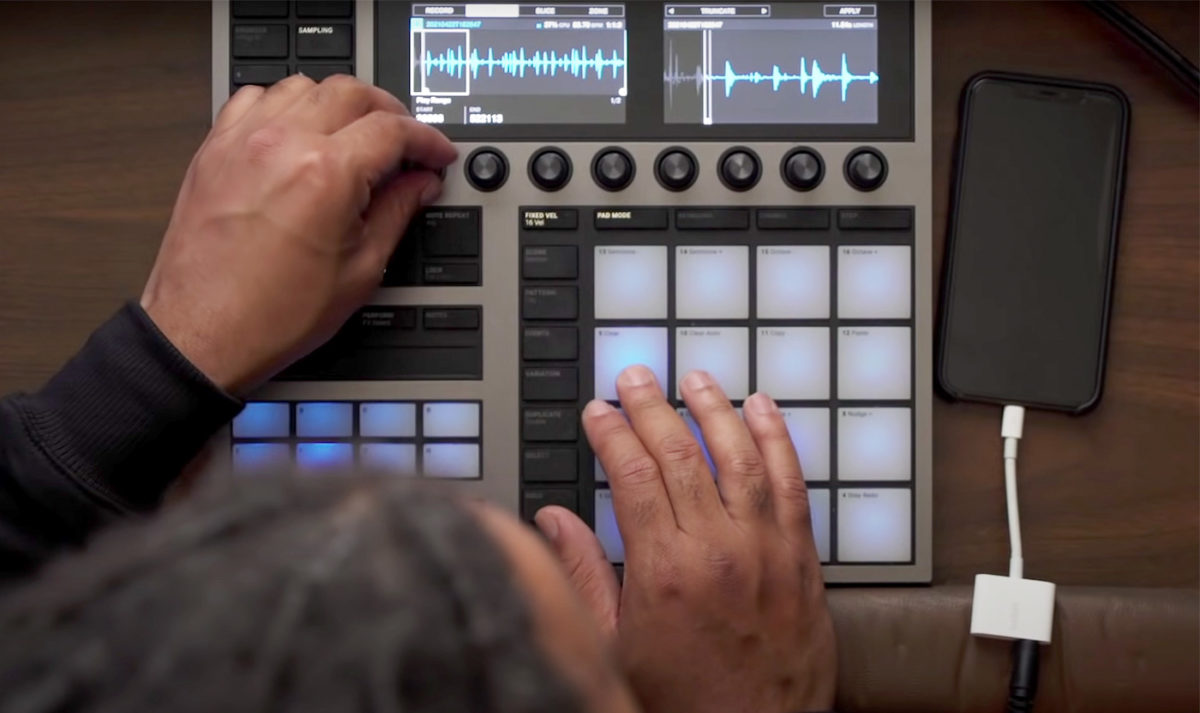
Find your sample position. Adjust the start and end positions on your sampler to play back just a snippet of the captured audio. This way you can isolate interesting sounds, like a particular musical note or drum hit. Khrysis uses this technique to isolate the kick and snare in his sampled breakbeat. If your sample is going to loop around, rather than being triggered a single time, then you’ll need to pick start and end times that make it loop seamlessly and in sync with your track.
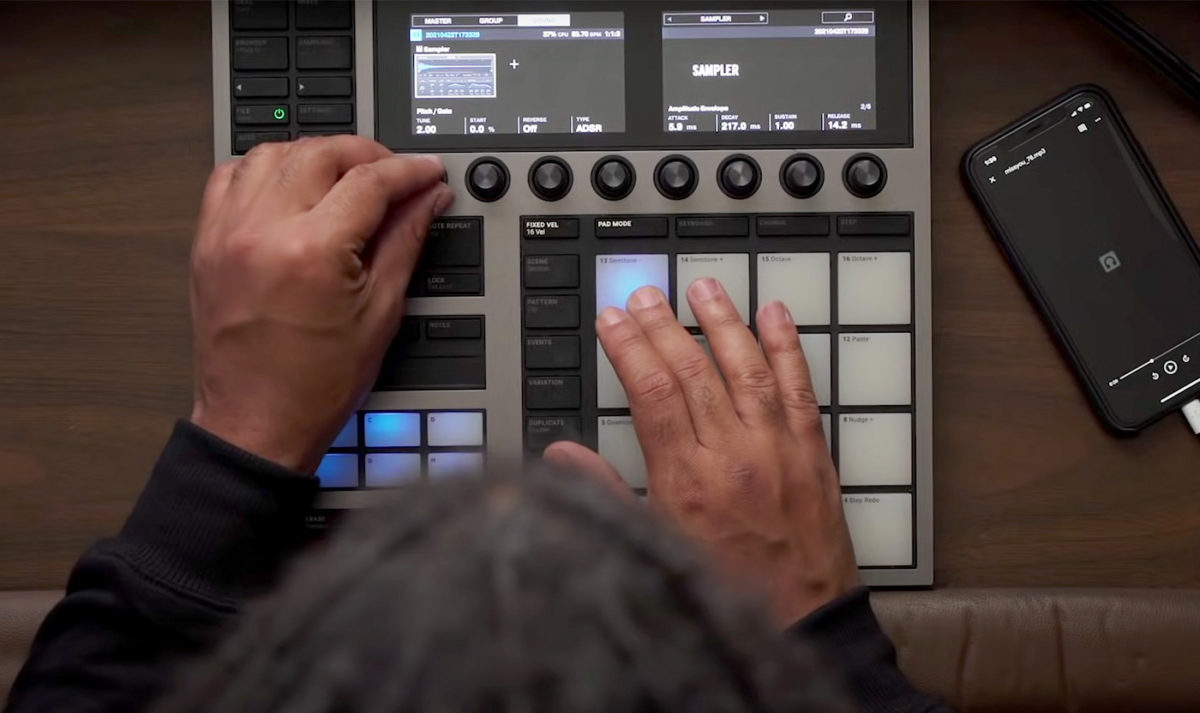
Tweak the pitch of your sample. You can use this to bring a note or chord into the key of your track. When working with drums, pitching them up can help tighten the sound, while pitching them down will create a sludgy feel. Khrysis uses this technique to turn some sampled notes into the melodic backbone of his track.
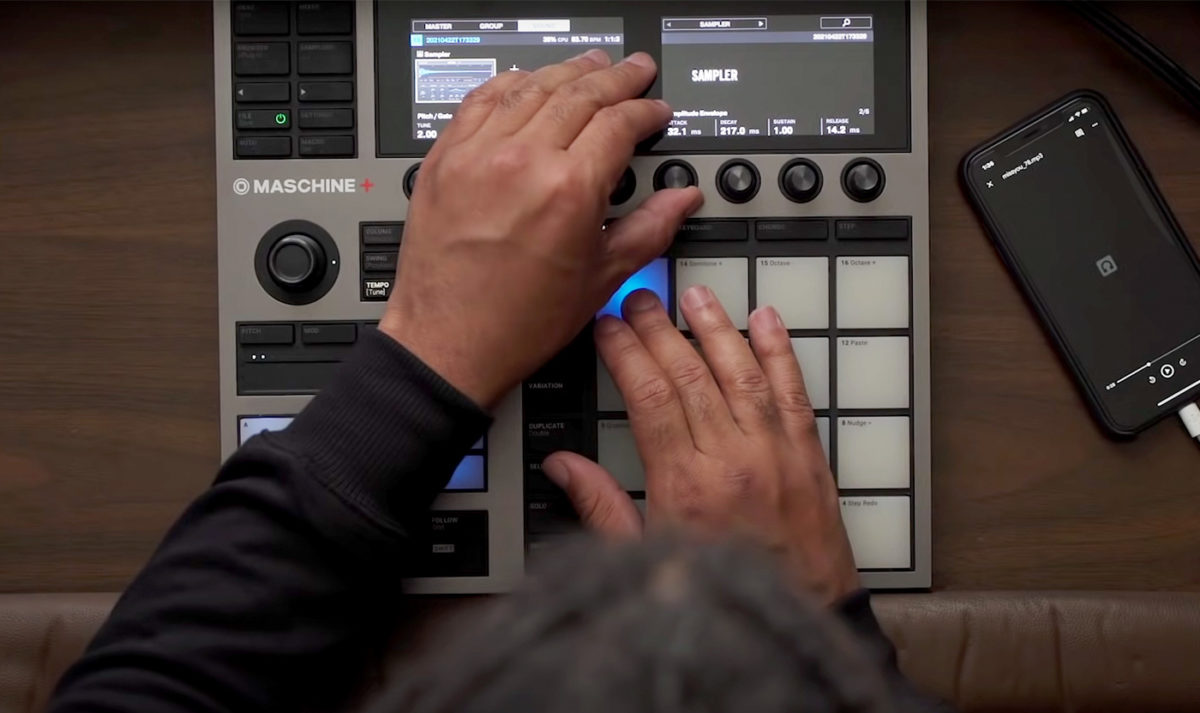
Adjust the envelope. Tweak the amplitude envelope on your sampler to change how your sample develops over time. Turn a chord into a dreamy pad by giving it a slow attack, or sharpen up a drum by giving it a short decay.
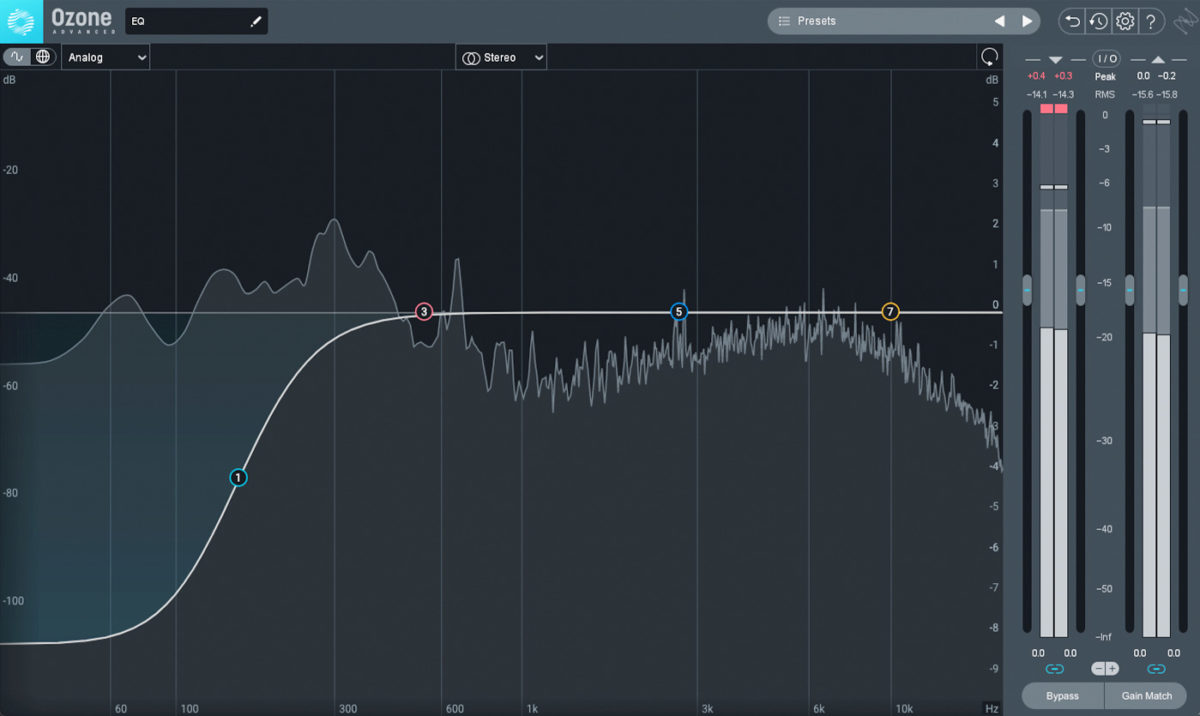
Process your sample. Once you’re happy with your sample’s position, pitch and envelope, you can use effects to give it some final polish. Your imagination is the limit here. Most samples will benefit from simple EQing to remove unwanted frequencies (such as low-end rumble), as Khrysis does with iZotope Ozone.
More creative effects—from saturation and compression to delay, reverb, and beyond—can transform your sample into something totally unrecognizable. In his demonstration, Khrysis puts a bouncing delay effect on one sample layer to give his beat depth.
4. Program your sample
Now that your sample is ready to go, you can start integrating it into your track. This is the moment when your captured sound transforms into a new musical idea. The MASCHINE+ offers touch-sensitive pads so that you can punch in your patterns on the fly. If you’re working in a software sampler, you might need to input notes into a piano roll. Either way, the goal is to create something musical that complements and enhances the track you’re working on. It doesn’t need to be complicated. As Khrysis shows, you can create a whole piece of music with just a few well-chosen samples.
Start sampling in your music
In this article we’ve looked in-depth at sampling in music. We’ve explored the ideas and techniques behind sampling, taken a tour through its history, and demonstrated how you can use sampling in your own productions.
Now it’s time to start your own sampling journey. Check out MASCHINE+, a hybrid sampling instrument that lets you build sample-based tracks from scratch – even without a computer.








